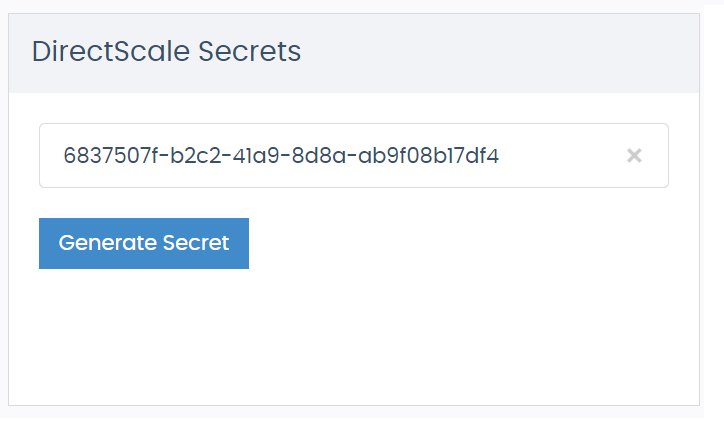Authentication & Authorization
The Extension Api and Directscale Platform establish secure communication through the use of API keys.
Locating Your API Key
To locate your DirectScale Secret API Key:
- Navigate to your Corporate Admin instance.
- Select 'Tools' and then 'Developer Tools' from the main menu.
- Click on the 'Extension Settings' link.
- On this page you can view or generate a new 'Directscale Secrets'.

The DirectScale Platform has both Live and Stage environments. You have separate keys for these environments. The environment you get your key from is linked to that environment. A key for stage will not work for live and a key for live will not work for stage.
- Each environment has it's own address, they can be delineated by the
directscalesection of the url.- Live -
https://{clientId}.corpadmin.directscale.com - Stage -
https://{clientId}.corpadmin.directscalestage.com
- Live -
Headers
For authentication, you'll pass your API Key in the header of your requests as shown in the following examples:
curl --request POST \
--url https://{clientId}.corpadmin.directscalestage.com/api/extension/services/AssociateService/v1/GetAssociate \
--header 'Accept: application/json' \
--header 'Authorization: Bearer dedfe8bc2c1448e7b2af7d1ad95a03c4'var client = new RestClient("https://{clientId}.corpadmin.directscalestage.com/api/extension/services/AssociateService/v1/GetAssociate");
var request = new RestRequest(Method.POST);
request.AddHeader("Accept", "application/json");
request.AddHeader("Authorization", "Bearer dedfe8bc2c1448e7b2af7d1ad95a03c4");
IRestResponse response = client.Execute(request);const options = {
method: 'POST',
headers: {
Accept: 'application/json',
'Authorization': 'Bearer dedfe8bc2c1448e7b2af7d1ad95a03c4'
}
};
fetch('https://{clientId}.corpadmin.directscalestage.com/api/extension/services/AssociateService/v1/GetAssociate', options)
.then(response => response.json())
.then(response => console.log(response))
.catch(err => console.error(err));Updated 7 months ago
